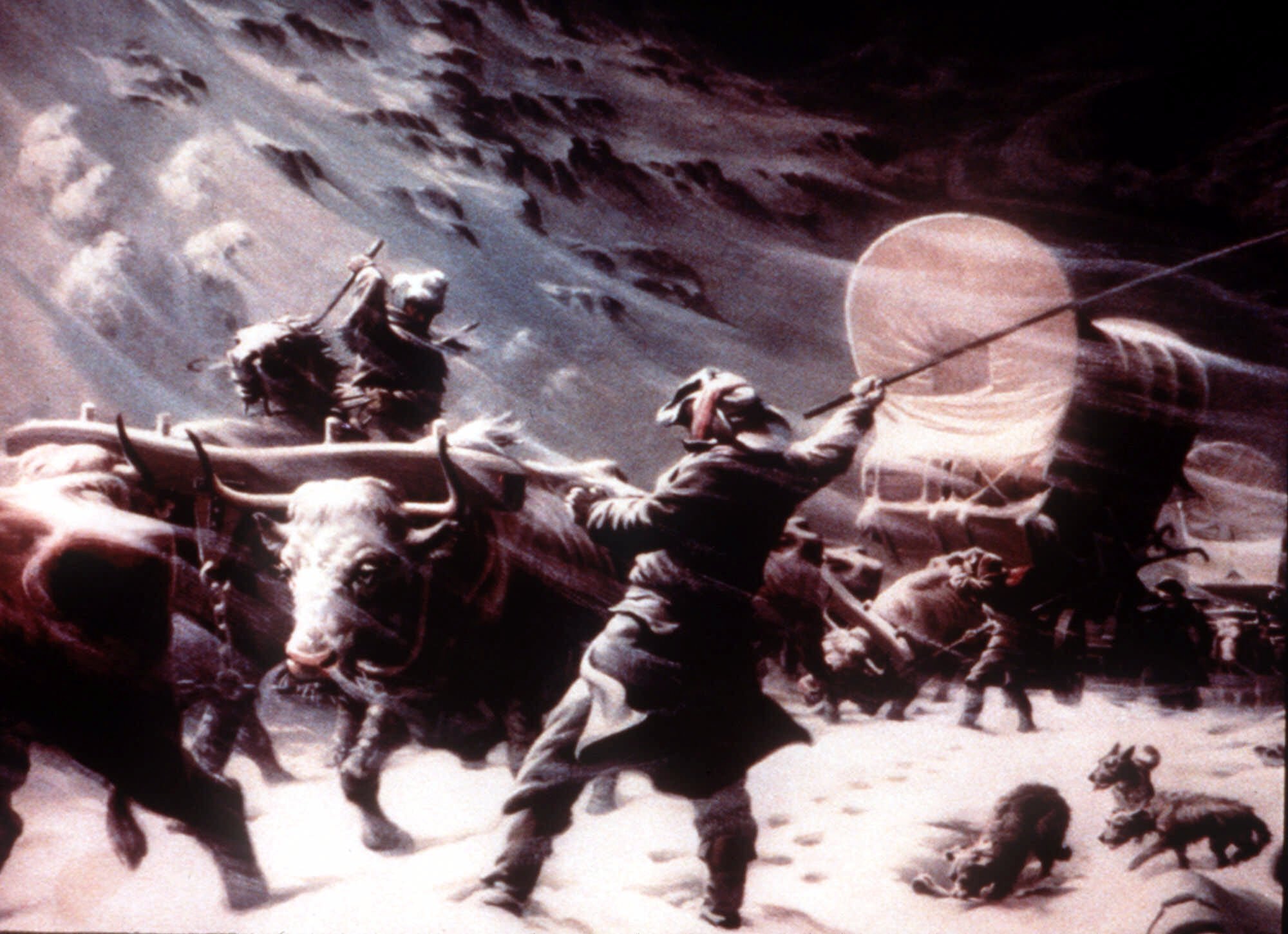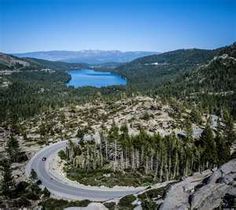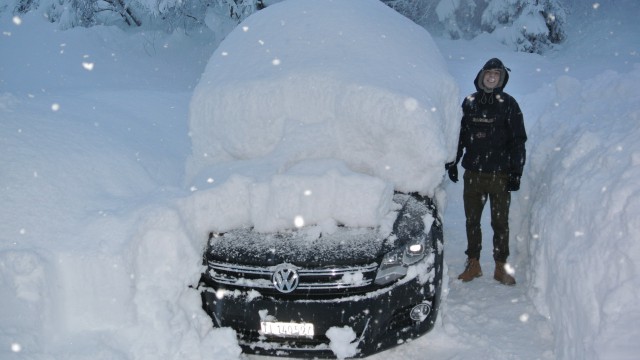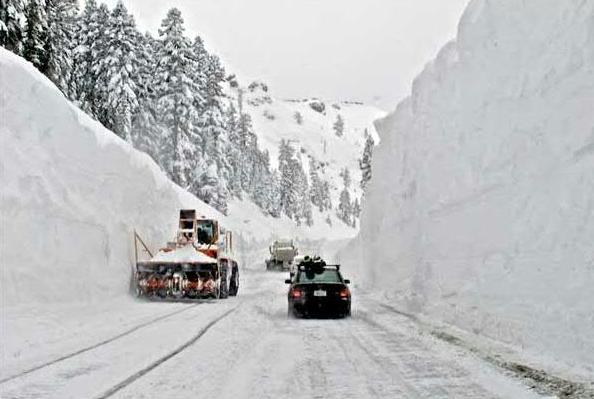Bugging over Donner Pass
Nine miles outside Truckee, Donner pass is a mere seven thousand feet in elevation, but the road to the summit is steep. Cars are required to use chains in bad weather. And the weather is usually bad.
Donner Pass is considered one of the snowiest places in the United States. The all-time record low temperature is forty-five degrees below zero, and winds have reached one hundred miles per hour. I felt the little Bug tremble with anxiety as we started up—or was it I who was trembling?
I’d read about the famous Donner Party of eighty-seven optimists who in 1846 set out by wagon train from Springfield, Illinois, to California, hoping to find their fortunes. In October when they reached Donner Lake near the mountain summit, snow began to fall. Nevertheless, they attempted to drive their oxen up the mountain, plowing the wagons through snow as much as  twenty feet deep. Eventually they gave up and built cabins and tents to wait out the winter.
twenty feet deep. Eventually they gave up and built cabins and tents to wait out the winter.
By Thanksgiving they were out of food and slaughtered the last of their oxen to feed the stranded community. In February when hunters finally found them, the campers were weak and emaciated. Half-eaten human corpses littered the small village. The survivors had sustained themselves by cannibalizing the dead.
Because of blizzards and driving snow, the migrants were not rescued until April. By then only forty-eight of the original party remained alive. Even after newspapers told of the ordeal, the following January prospectors once again rushed west when gold was discovered at John Sutter’s Mill. Ironically, within another year more than a hundred thousand people would be panning the streams and mining the canyons where the Donner Party had suffered through the winter, all without a single ounce of human flesh consumed.
Harry had bought the Bug in February, but since we were taking a southern route across the country, he decided not to buy snow tires. But he did invest in the latest snow chain technology. The chains are actually metal springs that strap flat onto the wheels to get a grip on snow and ice. He packed them into the Bug’s trunk, even though we weren’t sure how they’d do in Sierra Nevada snow.
Things looked promising that morning as the temperature gauge on the dashboard registered in the forties (above zero). As we started up the mountain, patches of snow whitened the steep north slopes beside the road. The pass averages thirty-four feet of snow every year, but the west was in the grips of drought and on this March day the pavement was clear and dry. Nevertheless, I shivered as we passed a huge sign that ordered us to stop and put on chains.
“Should we pull over?” I asked Harry. I’d been told that in winter people in yellow coats stand at the pullover area to help drivers get their chains on—for a charge of forty dollars.
“I don’t see a chain gang,” he answered. “So far, so good.”
“There might be snow at the top.” I liked to worry him.
“We’ll cross that snowbank when we get to it,” he said.
I thought of the Donner family camped here a century and a half earlier. If I were stranded in a blizzard and the only thing I had to eat was Harry, I pondered which part of him I’d devour first.
But then, the roles might be reversed.
I tried to think of something else.
When we reached the summit, conditions were still clear and dry. A strong wind shook the Bug, but even without winter tires it held the road faithfully. Below us, Donner Lake shimmered with light. I looked up at a sky as blue as the faded denim color of the Bug. Overhead a bald eagle played on the breeze—a good luck sign. From here to the Pacific Ocean, the Bug would be cruising downhill all the way.


All those snowy pictures got me worried too!
Nothing like shots of snow to cool down hot summer days! Thanks for the comment.